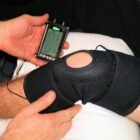Semaglitude and Tirzepatide – Brief Intro
Semaglutide and tirzepatide are both medications used in the management of type 2 diabetes. Here’s an overview of each:
- Semaglutide:
- Semaglutide belongs to a class of medications called glucagon-like peptide-1 receptor agonists (GLP-1 RAs). It works by stimulating insulin secretion in response to elevated blood sugar levels, suppressing glucagon secretion (which helps lower blood sugar), slowing gastric emptying, and promoting satiety.
- It is typically administered once weekly via subcutaneous injection.
- Semaglutide has been shown to improve glycemic control, reduce HbA1c levels, promote weight loss, and reduce the risk of cardiovascular events in people with type 2 diabetes.
- Additionally, semaglutide has been investigated for its potential use in weight management, with higher doses approved specifically for obesity treatment under the brand name Wegovy.
- Tirzepatide:
- Tirzepatide is a newer medication that belongs to the class of dual glucose-dependent insulinotropic polypeptide (GIP) and GLP-1 receptor agonists. It combines the actions of both hormones to enhance glucose-dependent insulin secretion, suppress glucagon secretion, slow gastric emptying, and promote satiety.
- Tirzepatide is administered via subcutaneous injection, and it is being investigated in clinical trials for both glycemic control in type 2 diabetes and weight management.
- Clinical trials have shown that tirzepatide has the potential to significantly reduce HbA1c levels and body weight in people with type 2 diabetes, often more so than other GLP-1 RAs.
Both semaglutide and tirzepatide offer promising options for managing type 2 diabetes, particularly for individuals who struggle with glycemic control and weight management. However, like all medications, they may have potential side effects and contraindications, and their use should be discussed with a healthcare provider.
Semaglitude and Weight Loss
It seems there might be a typographical error in your question regarding “Semaglitude.” Perhaps you meant semaglutide, which is a medication used in the treatment of type 2 diabetes and, in some cases, for weight management.
Semaglutide, specifically in its higher doses, has been approved for weight management in people who are overweight or have obesity. The higher-dose formulation of semaglutide, known by the brand name Wegovy, is administered once weekly via subcutaneous injection. It works by mimicking the action of the hormone GLP-1, which helps regulate blood sugar levels and suppresses appetite.
Clinical trials have shown that semaglutide (Wegovy) can lead to significant weight loss when used in conjunction with lifestyle modifications, such as diet and exercise. In studies, individuals using semaglutide for weight management experienced greater weight loss compared to those using a placebo.
Semaglutide is typically prescribed for people with a body mass index (BMI) of 30 or higher, or those with a BMI of 27 or higher with at least one weight-related condition, such as high blood pressure, type 2 diabetes, or high cholesterol.
It’s important to note that semaglutide, like any medication, may have side effects and contraindications. Common side effects may include nausea, diarrhea, constipation, vomiting, and abdominal pain. As with any medication, it’s essential to discuss the potential risks and benefits with a healthcare provider before starting treatment with semaglutide for weight loss. Additionally, it should be used as part of a comprehensive weight management plan that includes lifestyle changes and regular monitoring by a healthcare professional.
Tirzepatide and Weight Loss
Tirzepatide is a medication under investigation for its potential use in weight loss and the management of type 2 diabetes. It belongs to a class of medications known as dual glucose-dependent insulinotropic polypeptide (GIP) and glucagon-like peptide-1 (GLP-1) receptor agonists.
Clinical trials have shown promising results regarding the weight loss effects of tirzepatide. In these trials, tirzepatide has demonstrated greater weight loss compared to other medications used for diabetes management, including GLP-1 receptor agonists like semaglutide.
The weight loss effects of tirzepatide are believed to be mediated through its actions on both GIP and GLP-1 receptors. By targeting these receptors, tirzepatide can help regulate glucose metabolism, decrease appetite, and promote satiety, which can contribute to weight loss in individuals with obesity or overweight.
Tirzepatide is administered via subcutaneous injection and is being investigated for its potential use in the treatment of both type 2 diabetes and obesity. It is important to note that tirzepatide is still under investigation and has not yet received regulatory approval for weight loss indications. Clinical trials are ongoing to evaluate its safety and efficacy for weight management.
As with any medication, tirzepatide may have side effects and contraindications, and its use should be discussed with a healthcare provider. Additionally, lifestyle modifications such as diet and exercise are important components of any weight loss program and should be incorporated alongside medication treatment.
Tirzepatide vs Semaglitude – a Comparison of Pros and Cons
Semaglitude and Tirzepatide – snippet
Semaglutide and tirzepatide offer significant weight loss and improved glycemic control for patients with type 2 diabetes. Both medications show promising results, including reduced HbA1c levels and manageable side effects. The choice between them depends on individual patient needs and preferences, highlighting the importance of discussing options with a healthcare provider.
Related items..
-
AnteAGE® Overnight Brows Serum 3.5ml
$75.00 -
AnteAGE® Eye (15ml)
$105.00 -
PCA Skin Hyaluronic Acid Boosting Serum 3oz
$315.00 -
Katavi Radiant-S Facial Serum NEW
$55.00 -
Katavi Natural Cleansing Wash
$33.00 -
Katavi Moisturizing Day Cream
$43.00 -
Katavi Tula Tula – Intensive Night Care
$43.00 -
N/um – Kigelia Booster Serum
$46.00 -
Katavi Hluba – Enzymatic Peel
$30.00 -
Katavi Miracle Hydration Oil
$40.00
Sign Up for Monthly Newsletter to Learn & Save
Stay current on promotions, discounts and sales.
Get Your Learn On

Tirzepatide Weight Loss: Harnessing the Power of Family Support























